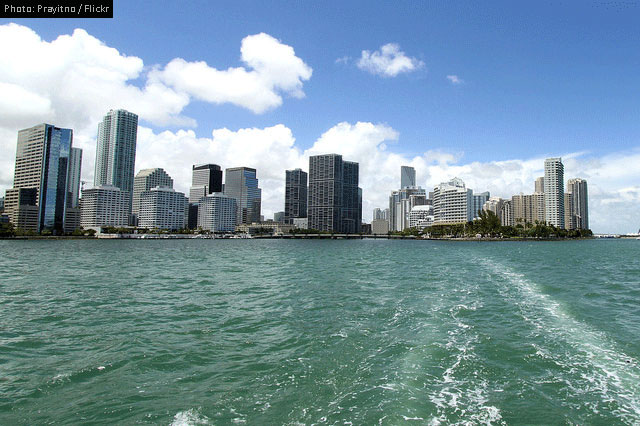One of the most frightening phrases in the world of finance and investment is “This time is different.” I always tell clients to run away whenever they hear it.
So what should we make of the news that, as of the start of this year, the total taxable value of real estate in Miami-Dade County, Florida, one of the epicenters of the real estate bust, has climbed above even the heights that it reached before it all came crashing down?
Not much, in my opinion. Because this time really is different.
A decade ago, the real estate bubble in South Florida (and in some other hot spots like California and the desert Southwest) was fueled by easy credit and a belief that housing prices could never decline, no matter how undesirable the location of the housing in question. It was not true then – places like Buffalo and Detroit should have made this obvious – and it is not true now.
But as prices in desirable areas spiraled higher, new subdivisions sprawled far into the swamps of south Dade, which is the mostly agricultural region between Miami and the Florida Keys, and analogous places such as California’s Central Valley. These new homes were hours of gridlocked freeway removed from the places where people wanted to work, shop and relax. But since money was readily available to pay the inflated prices these new homes commanded, and since the homes could not possibly lose value – or so people thought – they sold like hotcakes. Right up until they didn’t.
The hottest markets around Miami today are the ones closest to the action, in the city’s revitalized downtown and across Biscayne Bay in Miami Beach and other shoreline communities. Until recently, the rapid rise in prices in many of these areas was fueled largely by cash buyers from overseas seeking safe havens for their wealth. A slowing global economy has put a damper on such business, but this slowdown has been partly offset by better performance in the United States and, most importantly, the growing interest in relocating to the Sunshine State among baby boomers.
Miami has emerged as a major urban center in ways that were not in evidence even a decade ago. The downtown district offers professional sports, world-class performing and fine arts, and restaurants in a variety of cuisines helmed by celebrity chefs. It also offers the sort of housing and office mix that attracts upscale young professionals who can afford to buy or rent the thousands of pricy condominiums that have been built since the bottom of the bust and those that arrived together with the crash. Transportation options are good and getting better. The Brightline high-speed rail system is expected to link downtown Miami with Fort Lauderdale and West Palm Beach next year, with planned future expansion to Orlando. A light rail link to Miami Beach is also under serious discussion, and unlike many rail projects, this one makes more sense than a bus route. There are only so many ways to get across the bay.
Traffic on the highways is still terrible, and rising prices are putting the squeeze on the many lower-paid workers who still must commute downtown from distant reaches of the county. Some locals resent being displaced from lower-cost inner-city neighborhoods by the influx of new money from elsewhere. Yet the Florida housing stock is, on balance, newer and in better condition than that of older Northern cities, and housing costs have not outstripped what the local economy can bear. Not yet, at least.
So Miami is back, newer, bigger and more glittery than ever. It remains the heart of a region that has seen many boom-and-bust real estate cycles, ever since the great 1926 hurricane put an end to the pre-Depression Florida land rush.
Yes, the market will eventually slow from its recent pace, and construction will have to take a breather. But I don’t see another crash coming any time soon, because – this time is different.
- Bulenox: Get 45% to 91% OFF ... Use Discount Code: UNO
- Risk Our Money Not Yours | Get 50% to 90% OFF ... Use Discount Code: MMBVBKSM
Disclaimer: This page contains affiliate links. If you choose to make a purchase after clicking a link, we may receive a commission at no additional cost to you. Thank you for your support!




It is almost hard to tell if author is being fasicious.